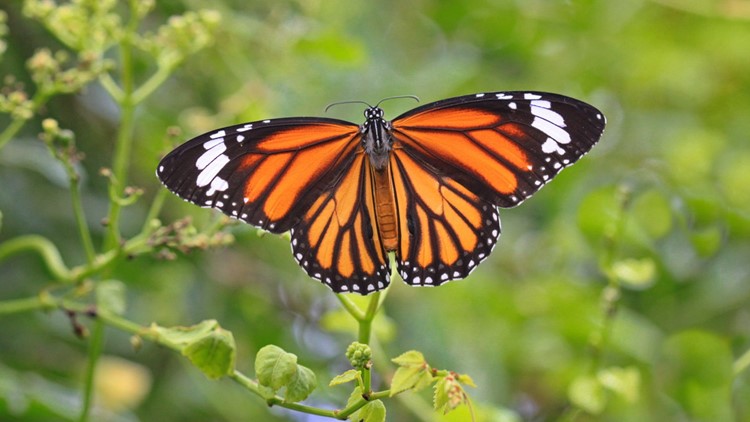DALLAS — The monarch butterfly isn't just iconic. It's also the state insect of Texas.
But experts warn Texans are likely to see fewer of the insect's instantly recognizable orange and black wings this summer. After authorities in Mexico announced a dramatic decline in their overwintering population, scientists are expecting scarce monarch butterfly populations across the United State and Canada this summer.
According to the WWF-Telmex Telcel Foundation Alliance, the total forest area occupied by overwintering monarch colonies in Mexico this year is a mere 0.9 hectares. That's a staggering 59.3% decrease from the previous season and the second-lowest number on record.
The record low was set in 2013-2014 at 0.67 hectares.
"This news is a shock to all who follow monarchs," said Orley "Chip" Taylor, founder of the monarch butterfly education and conservation program Monarch Watch. "The depth of this decline is beyond our experience, and the implications for the future of the monarch migration are surely of concern."
Experts attribute the plummeting numbers to widespread drought conditions last fall across the monarchs' migratory range from Oklahoma to central Mexico. These droughts significantly reduced the availability of flowering plants and nectar, which are crucial resources for the butterflies as they fuel their long journeys and build winter fat reserves.
"However, populations have been low in the past," Taylor said, urging caution against overreactions to the new data. "This count does not signal the end of the monarch migration."
Indeed, Monarch butterflies are known for their remarkable resilience, having recovered from population declines before. Still, the current situation does underscore the need for urgent conservation efforts.
"To recover, monarchs will need an abundance of milkweeds and nectar sources," said Kristen Baum, the new director of Monarch Watch. "We need to get more milkweed and nectar plants in the ground, and we all need to contribute to this effort."
Individuals can help by planting milkweed in their gardens, supporting organizations like Monarch Watch, and advocating for policies that protect monarch habitat. For more information on the low population numbers and how to get involved in conservation efforts, visit the Monarch Watch Blog.



